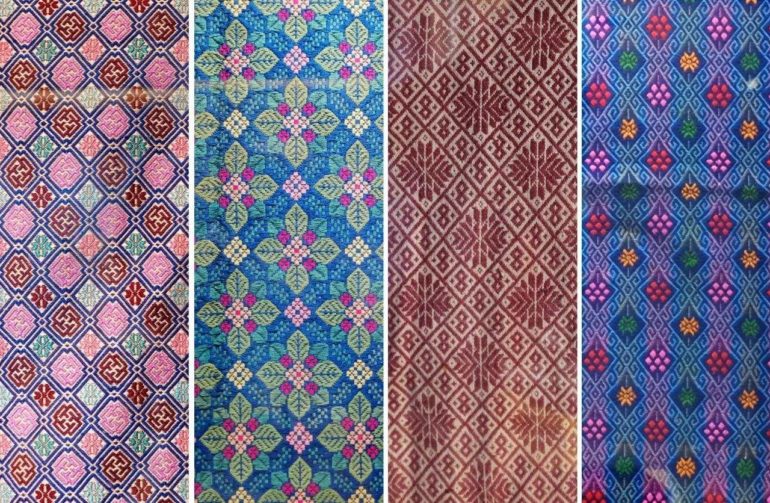As a significant local culture representation in Guangxi China, the Zhuang brocade is loved and accepted by a more local millennium. However, why are young people working in the Zhuang brocade industry still scarce?
Except for my passion, I really cannot imagine any other reasons to keep me engaged in this job
Su Yue
Su Yue works as a young craftsman and a designer at a small company for six years, but he is still almost the youngest employee. Now he is 28, facing many living problems and pressure while full of experience and ideas for the Zhuang brocade industry.
“Except for my passion, I really cannot imagine any other reasons to keep me engaged in this job,” said Su Yue.

Su Yue is living a public rental housing, and the room is only 30 square meters. The windows facing west made his room extremely hot in the afternoon. He leaves work at five o’clock every day, which is a lot earlier than most other jobs in China. However, after he got home, he would often turn on his computer and design the Zhuang brocade.
“My boss did not ask me to finish these tasks on the same day. I am really into these designs, so I do not think this is exhausted.” Su Yue presses the button and turns on the tablet, “This is not overtime, I am just doing what I love.”
Nevertheless, his passion doesn’t reward him a substantial income.
According to the latest survey report released by QuestMobile in July 2020, young people under 30 in China have the highest monthly salary between 4,000 yuan and 8,000 yuan, close to 30%. However, Su Yue is not in this group.
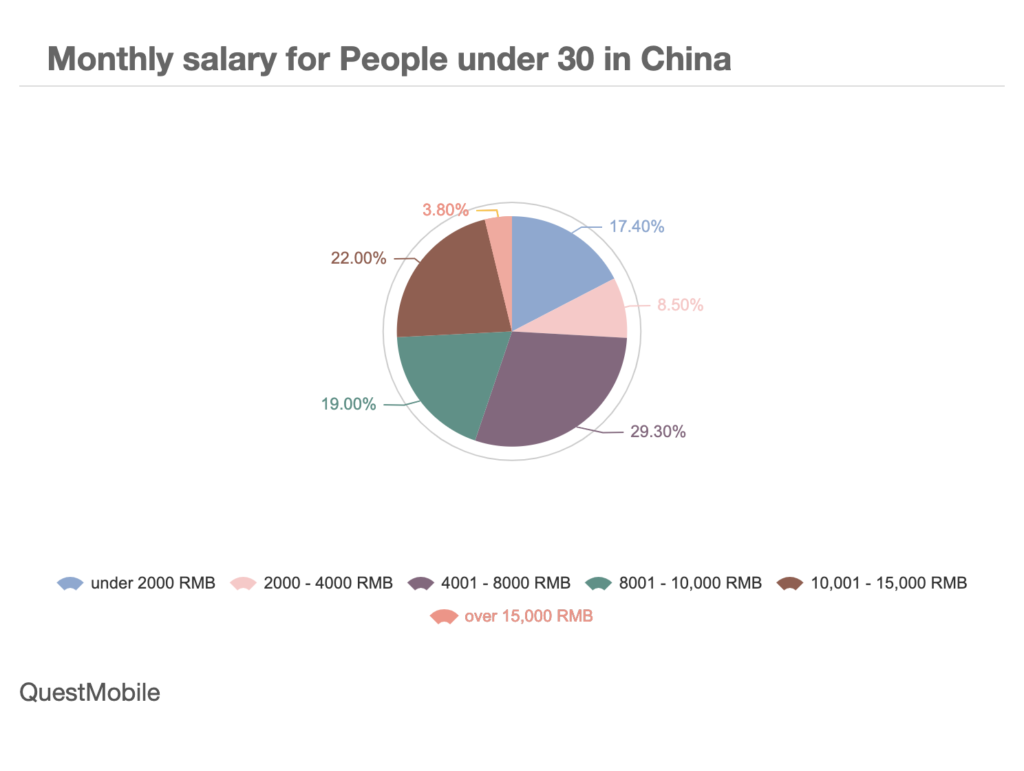
Su Yue graduated from Guangxi University of Arts in 2014. When he first started working, his monthly salary was only 1,600 yuan, less than 200 pounds. After six years, his salary finally doubled, but his monthly salary is still less than 400 pounds.
Su Yue rarely buys new clothes, and he needs to be careful to spend every penny prudently when he tends to buy new pieces of clothing. “The last time I bought clothes was probably half a year ago. I could only buy two or three Uniqlo short sleeves when they were on sale.” He said, “Fortunately, the city I lived is summer all year round, summer clothes are much cheaper than winter outfits.”
At the same time, to save money, Su Yue didn’t often cook. Usually, a takeout meal only costs 15-20 yuan (2-3 pounds), but cooking may cost 30-40 yuan (4-5 pounds). “To be honest, it doesn’t cost much to cook by myself, but I try to save as much as possible,” he said.
According to CREPRICE, as of August 2020, the average rent in Nanning is 2,319 yuan (about 260 pounds) a month. Compared to other peers who may face high rents, Su Yue is lucky. In 2018, he applied for a public rental housing project operated by the Nanning government. After waiting for a whole year, he finally got a cheap public rental housing. For a house of the same size, Su Yue would spend at least 1,000 yuan a month if it is not a public rental house. But after applying for public rental housing, he only needs to pay 350 yuan (40 pounds) a month in rent.
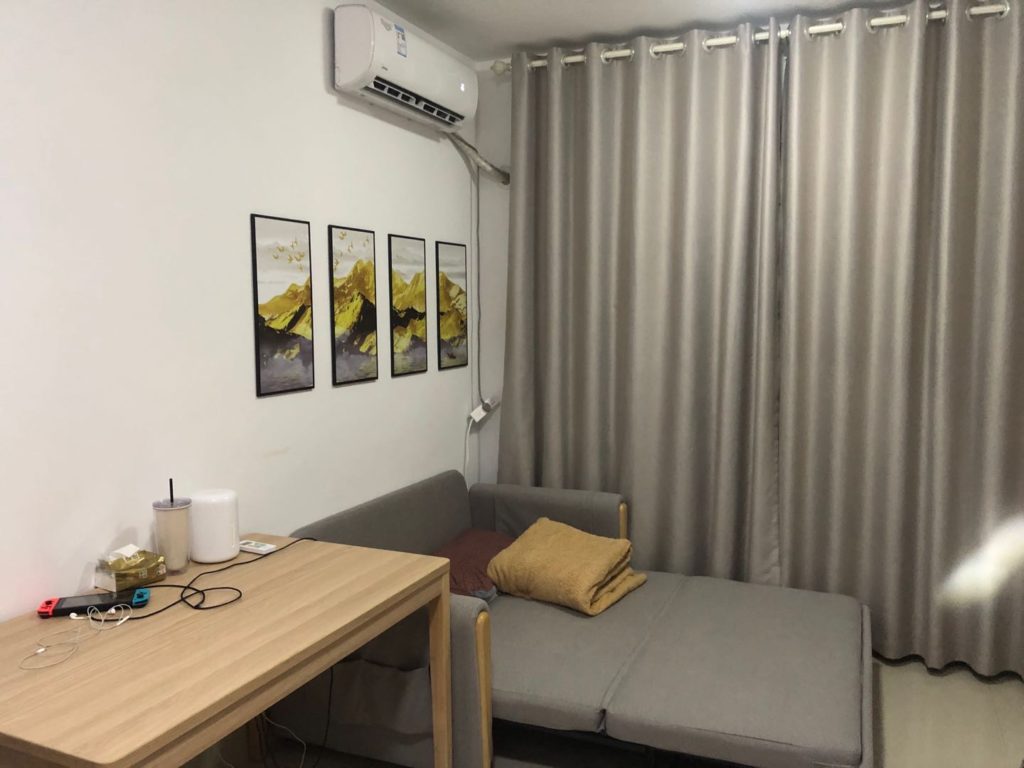
“To be honest, I never thought that I could get a spot so quickly,” he said. “There are so many applicants, and many of them are fresh graduates. I have been working for several years. To be honest, it’s incredible for me to have this opportunity.”
For buying a house, Su Yue has his plan. “Although I know that buying a house is a fantasy for me, I do have this idea.”
However, it could be virtually impossible for Su Yue to purchase his house with the current wage.
A report recently released by CREPRICE shows that, as of September 2020, the average unit price of house prices in Nanning is 12,957 yuan (1440 pounds) per square meter. However, this figure was only 9,958 Yuan (around 1,106 pounds) per square meter two years ago (Fangjia Data).
If Su Yue wants to buy an 80-square-meter house in Nanning, the tepid second-tier city in China, the house prices will cost his 22-year salary. Meanwhile, in these 22 years, he will not be allowed to spend a penny.
“It’s impossible to say not to be anxious, especially when my friends’ wages are higher than mine,” he says, “but maybe I’m more optimistic than others, and I’ve gotten used to it over time.”
Su Yue’s company is a small one with about 45 employees. Since he joined the company in 2014, new people have entered the company every year, but he is the only one who has remained in the past few years.
“Everyone is full of enthusiasm at the beginning, but the reality is so cruel. No matter how motivated you are, your salary can’t even reach the city’s average. Friends who graduated with me are getting higher salary every year. It makes me feel like I am the only one who still struggles with low income,” he sighed, “Except for my passion, I really can’t imagine any other reasons to keep me engaged in this job.”
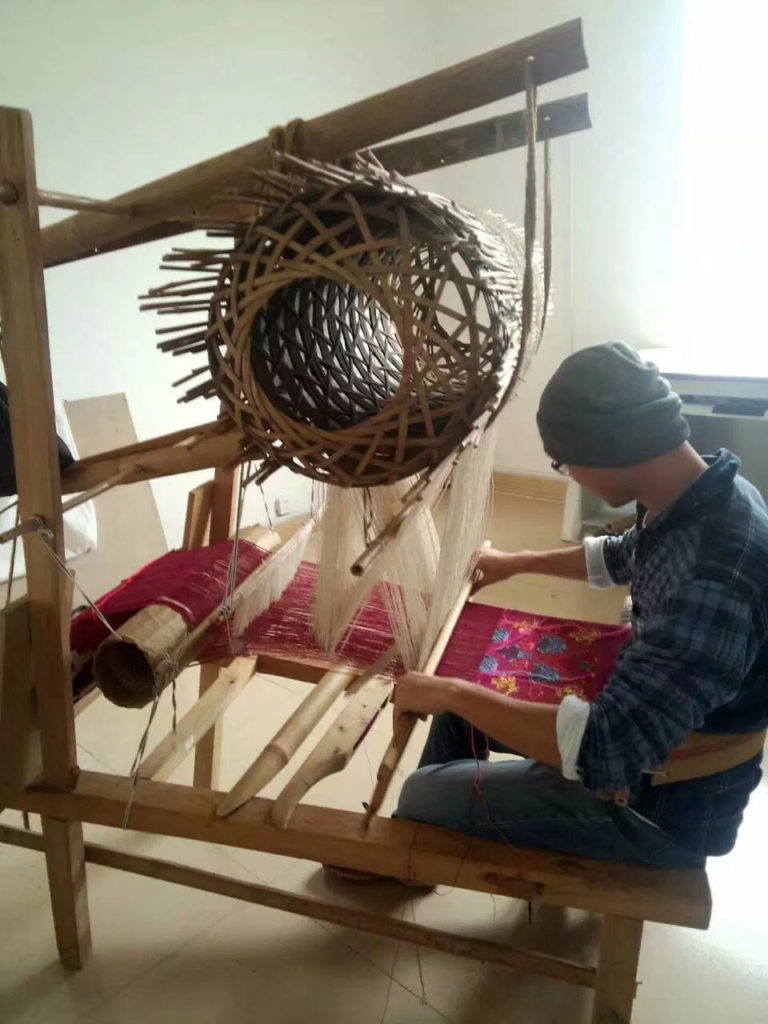
Su Yue is not the only one who has worked long hours but still has low wages. Yu Mingfeng, who worked in the culture and creativity department of the Museum of Guangxi Zhuang Autonomous Region, has a similar experience. “I started working at the museum in 2012,” she said. “By the time I left last year, my monthly salary was less than 4,000 yuan.”
But Yu’s living quality is much better than Su Yue. “I have an additional source of income, and sometimes my family supports me financially.” She said. “I can’t support myself by salary alone.”
However, in contrast to the negative salary situation of cultural industry practitioners, China’s cultural industry market has shown positive trends in recent years.
A report from iiMedia Research points out that China’s cultural industry revenue had increased from 23.3 million yuan in 2012 to 77.1 million yuan in 2019. Data from the National Bureau of Statistics of China also show that, between 2012 and 2017, the proportion of China’s cultural industry in GDP also increased from 3.5% to 4.2%.
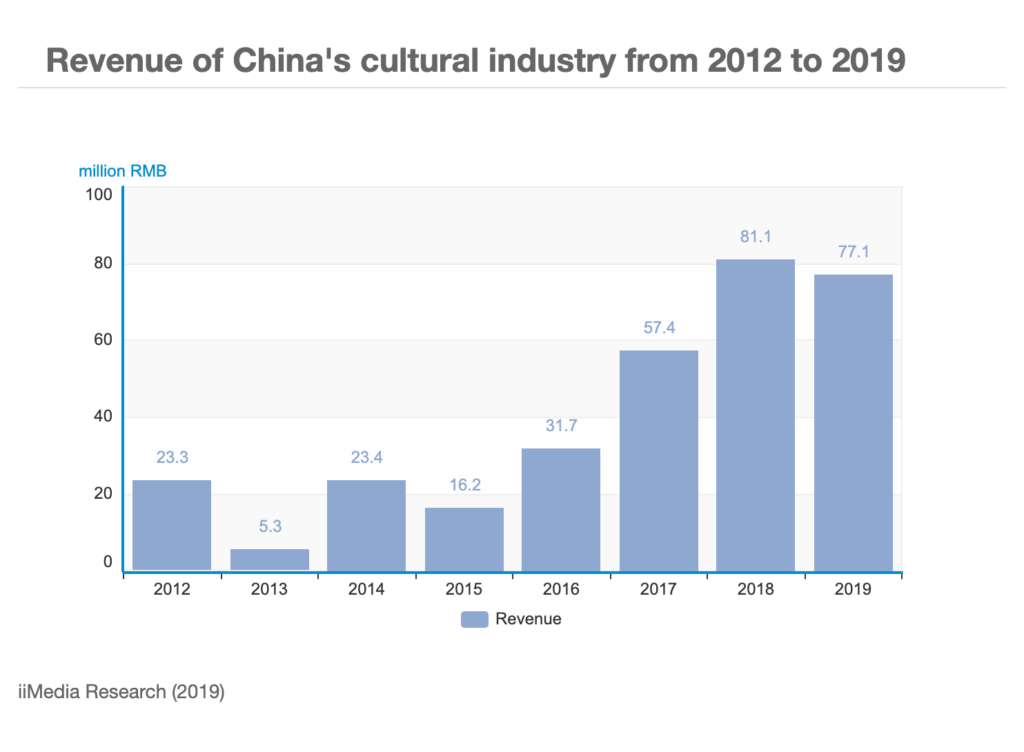
In China, where society is developing rapidly and changing every day, millennials’ love for traditional culture has reached an unprecedented height.
Data from Xinhua News Agency Think Tank in 2019 reveals that more than 70 percent of consumers of traditional cultural goods are young people born in the 1980s and 1990s. Data from CGTN and Tencent Centre for Internet and Society also show that nearly 90% of young Chinese have a great interest in traditional culture.
Liang Hanchang, the director of Guangxi National Culture and Art Research Institute, believes that young people may not have a deep understanding of traditional culture as the previous generation. “However, society and the public have begun to emphasize the importance, so many young people have started to learn about Chinese traditional culture.” He said. “If the Zhuang brocade’s products are more exquisite, I think there will be more young consumers.”
The positive attitude of the young Chinese generation towards traditional culture is also one of the reasons for supporting Su Yue to continue working in the Zhuang Brocade industry. “Actually, I think the brocade’s market is large, much larger than the public thinks,” he says. “Like many people are fancy of Vintage clothes or culture, there are also many young people who are eager to learn about China’s own traditional culture, such as the Zhuang brocade.”
However, not each young practitioner can persist in the work with their love for the Zhuang brocade like Su Yue. Low salaries defeat most young practitioners.
Su Yue has his views on low salaries. “I will not deny that there is no market for brocade’s development because of my low wage. On the contrary, I am confident in the development of the Zhuang brocade,” he said. “But many factors are leading to low salary, perhaps because of my company’s operating insufficiently, or probably the type of my work limits the possibility of ideal salary, or I might not have enough regular clients.”
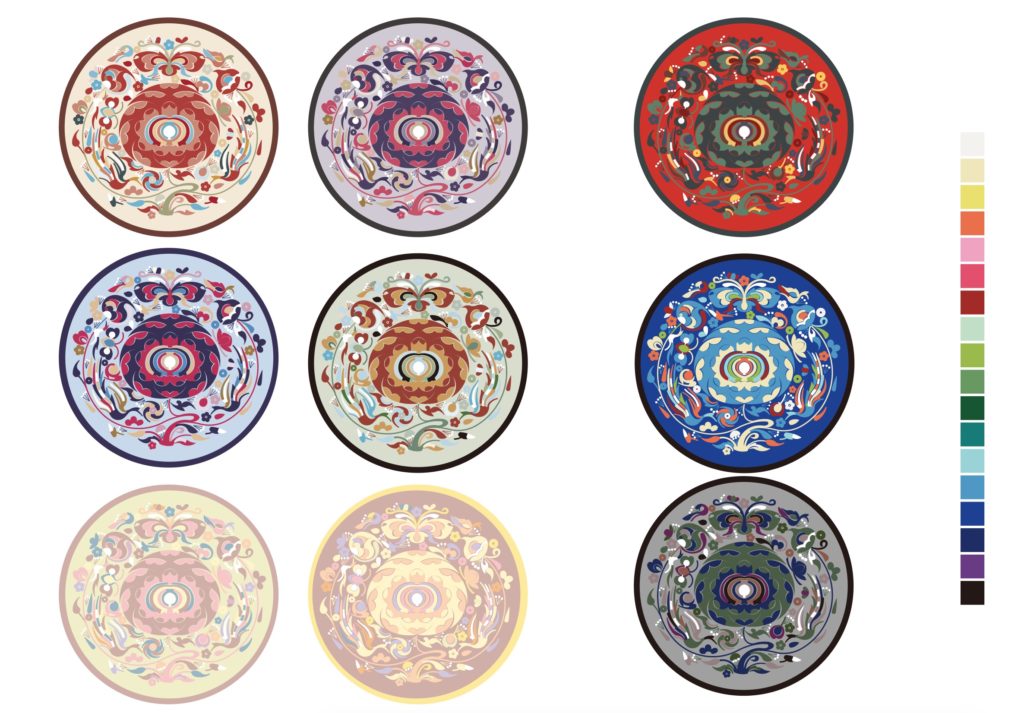
Fan Miaomiao, the associate research librarian of the Anthropology Museum of Guangxi, believes that the prosperity and development of the cultural industry market cannot be separated from young people’s attitudes towards traditional Chinese culture.
“Compared with our generation, the young people are more confident and tolerant of our country’s culture,” she said. “In recent years, museum visitors have become younger, and more young couples have brought their children to the exhibition.”
Liang Hanchang points out that the reason for the low wages of practitioners is the underdeveloped market. “If the Zhuang brocade industry wants to be developed well, it must rely on young consumers.”
Liang believes that the government has not paid enough attention to the development of the Zhuang brocade, and the policies and financial support are not perfect. “Many people who want to participate in this industry for research and development do not have enough funds, and even the number of products cannot be guaranteed. How can the market stimulate young people to consume?”
Currently, Su Yue is also re-planning his future career. Obtaining a teacher qualification certificate is one of his current plans. If he gets this certificate, the chances of working as an art teacher in the future will be significantly improved.
“In fact, I don’t think I’m suitable for being a teacher, and my interest is not in this area. And the salary is not much higher than my current salary,” He said with a smile, “But after becoming a teacher, I will feel much easier and less stressed than now. The most important thing is that after becoming a teacher, there will be more vacations, during which I can do things I like, such as designing new products for clients to make more money.”
“What I really want to do is set up a studio and create my original independent brand. Or open an online store on Taobao to create original cultural products,” said Yue. “But it’s challenging for me at the moment.”

Su Yue has his worries about becoming an independent designer. “The first thing to consider is start-up capital.”
However, Su Yue currently has a loan of about 20,000 yuan, 2300 pounds, to repay. For him, who has no savings, he can’t spend any money to prepare a new studio in a short time. Moreover, Su Yue’s family situation is not ideal. “My father is not in good health, and the family’s savings are used up by him. The annual medical expenses have almost consumed all the savings in my family.”
But what worries Su Yue the most is not the start-up capital but China’s protection of cultural property rights. He thinks the Chinese government currently offers little protection for original designs.
“Any indie designer or brand that does an original design hates plagiarism,” he said. “Intellectual property protection is not in place, and no one is willing to step forward and create an original brand and design seriously.”
Su Yue’s misgiving is not without reason. The latest special report on intellectual property infringement released by the supreme people’s court of the People’s Republic of China in October 2017, counted the data of relevant cases between January 1, 2015, and December 31, 2016. The data shows that the number of cases in 2015 was about 50,000, but in 2016 it increased to about 70,000.
Huang Qingsui, who used to be a lecturer at Guangxi Arts University, has encountered numerous plagiarisms of his work. Among them, what impressed him the most was the use of his design by the famous Chinese Internet company 360 in 2016 as a poster for its new product launch.
“One day, my friend told me that the poster I designed was stolen by 360. I saw the poster they posted on Weibo, and it was indeed my work,” he said. “At that time, I had just worked for a few years and had no experience in how to deal with intellectual property rights infringement. I wanted to resolve this matter as soon as possible, so I didn’t ask them for financial compensation until the end.”


In this case, Huang Qingsui was lucky. The pressure of online public opinion caused 360 Company to apologize and delete related Weibo publicly.
However, not all plagiarism disputes can be satisfactorily resolved. According to a report by the Supreme Court of the People’s Republic of China, from January 1, 2015, to December 31, 2016, only 7.93% of the plaintiff’s claims in intellectual property infringement cases were supported.
Huang Qingsui thinks that the Chinese government’s underdeveloped laws on intellectual property protection could be relevant to the way of China develops.
“China is developing too fast now, and many technologies patterns are developed based on existing ones, which can easily lead to intellectual property infringement during this process,” he said. “However, China needs this kind of rapid development, so the government also has a tacit attitude to such infringement.”
Both Huang Qingsui and Su Yue hope that the Chinese government will increase the penalties for intellectual property infringements in the future.
“Compared with independent designers, plagiarism can be thought does not need any cost,” Su Yue said with a sigh, “plagiarism has the greatest negative impact on indie designers and even the entire industry. In my opinion, if the protection of originality is adequate, then my worries about being an independent designer will all disappear.”
